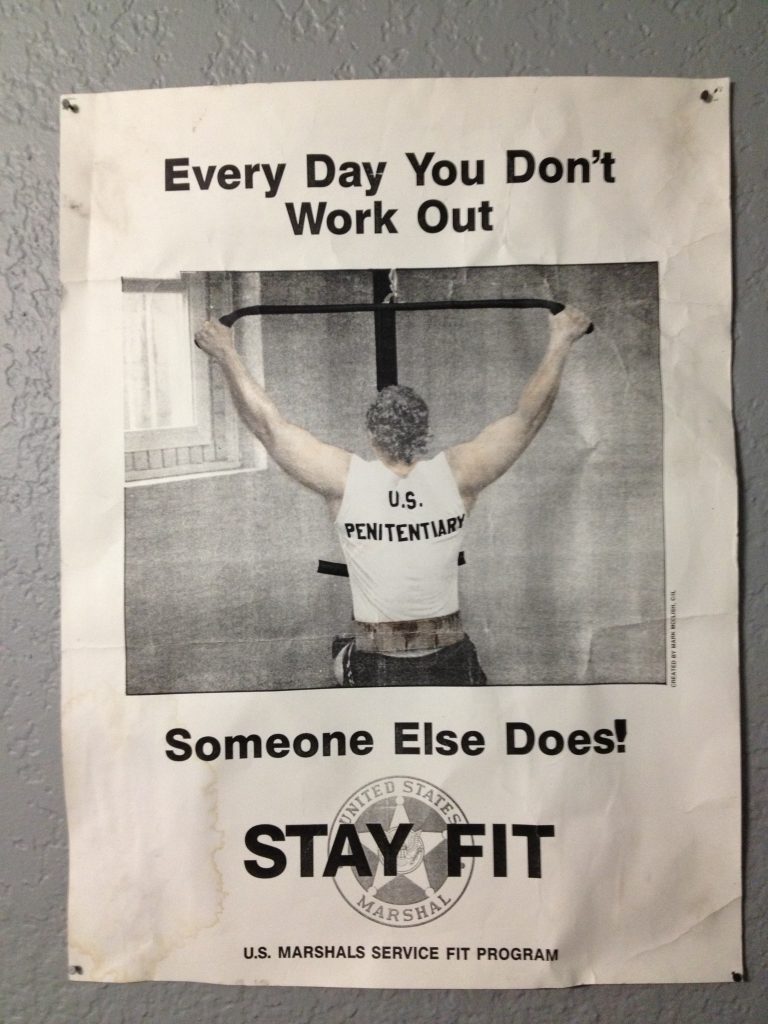By Rob Shaul
Our approach to Law Enforcement fitness is quite contrarian.
Unlike the soft, “wellness” programs common to many state, county, and municipal law enforcement departments, we are not interested with overall health of officers. Our focus is mission-direct fitness programming which prepares them for the violent and dangerous nature of their profession.
 Many “wellness” programs ignore the reality of the job: for law enforcement athletes, physical fitness can be a matter of life or death. An unfit cop can get him or herself killed, or lead to the injury or worse for a teammate or civilian.
Many “wellness” programs ignore the reality of the job: for law enforcement athletes, physical fitness can be a matter of life or death. An unfit cop can get him or herself killed, or lead to the injury or worse for a teammate or civilian.
We understand the physical demands of the law enforcement profession do not discriminate. Criminals don’t shoot slower bullets for unfit law enforcement officers. Big, strong bad guys don’t challenge officers of similar builds, they look for the weak, obese, small, de-conditioned.
Further, fitness is the individual’s responsibility. It is a professional obligation to be fit enough for the most demanding job tasks. Leadership has the critical role of establishing and supporting a strong fitness culture. However, the ultimate responsibility for job performance rests with the individual. It helps greatly if leadership provides the means (time, space, equipment, fitness programming) to become fit. Yet, it is not acceptable for a weaker member of a team to blame their shortcomings on leadership, age or lack of motivation. In law enforcement, where your life, or the life of a teammate, may be compromised due to being overweight or unfit, lack of individual responsibility for one’s own fitness is unacceptable. A strong fitness culture demands and expects strong individual accountability.
Fitness training helps everything. We’ve seen this many times – when an individual commits to professional fitness training for their job, this commitment and professionalism migrates to all other areas of their his/her life. Every element of job performance improves.
There’s no safe “garrison time” for front-line patrol, detective and correction officers. Unlike many of the military athletes we work with, front-line law enforcement officers are constantly deployed. There’s no time back stateside in garrison between deployments. LE athletes know better than any, that even in the sleepiest town or beat, a routine traffic stop, domestic call, welfare check can turn unexpectedly violent and dangerous.
All that being said, we’ve worked with LE athletes long enough to know that poor fitness and a poor fitness culture is more often the rule, not the exception at most departments.
We built the LE OnRamp Training Plan for those LE Athletes who are ready to take personal responsibility for their job-based fitness and need a place to get started.
LE OnRamp Overview
The 8-Week LE OnRamp Training Plan is designed to build a solid level of “Base Fitness” for unfit to moderately fit Law Enforcement Athletes in order to prepare them for the volume and intensity of MTI’s daily LE Athlete programming and other training plans.
Though this is an “OnRamp” training plan, it is not remedial. You’ll be challenged daily, and likely be sore for some time. Embrace the suck and keep grinding.
LE Athlete Fitness Attributes
We have identified 6 Fitness Attributes for Law Enforcement Athletes (patrol/detective/correction):
- High Relative Strength – Strength per bodyweight, especially total and lower body relative strength. In most tactical situations, LE athletes need to move quickly and powerfully. By building high relative strength, we aim to get them as strong as possible, without adding unneeded mass, while still keeping them fast, quick and powerful. As well, strength is the key to durability. Stronger athletes are harder to injure in the first place, don’t get injured as bad if something does happen, and recover faster if they do get injured.
- Upper Body Hypertrophy – LE athletes, especially patrol, can benefit from upper body mass. A stout upper body can help intimidate would-be bad guys from assault or attack.
- Work Capacity – Horsepower and aerobic power to go super hard for relatively short periods – especially pertinent in any tactical situation. Law enforcement Work Capacity programming should have a strong emphasis on sprinting ability and recovery – as this is the mostly mode of effort when things are dangerous.
- Chassis Integrity – Functional, transferable core/mid-section strength and strength endurance for mission performance and overall durability.
- TAC SEPA – Tactical Speed, Explosive Powe, and Agility.
This training plan deploys “Fluid Periodization” – our methodology of training these 5 fitness attributes concurrently.
Plan Progression
The first 4 weeks of this training plan deploy bodyweight strength training, short (5-10 minutes) sprinting-based work capacity intervals, chassis-integrity, and short-distance endurance training.
The goal for weeks 1-4 is to get you moving, and lay a foundation of fitness for the loaded strength work, and more intense gym-based work capacity and agility work in the last 4 weeks of the plan.
On week 5 we introduce gym-based, free-weight strength training, upper body hypertrophy, and gym-based multi-modal work capacity efforts.
On week 6 we introduce TAC SEPA into the mix.
- Weeks 1-6, you’ll train 4 days/week.
- Week 7-8 we push you to 5 days/week.
Weekly Schedules:
Weeks 1-2
- Mon – Bodyweight Strength, Work Capacity
- Tue – Work Capacity, Chassis Integrity
- Wed – Rest Day
- Thu – Short Endurance, Chassis Integrity
- Fri – Bodyweight Strength, Work Capacity
Weeks 3-4
- Mon – Bodyweight Strength, Work Capacity
- Tue – Work Capacity, Chassis Integrity
- Wed – Bodyweight Strength, Work Capacity
- The – Short Endurance, Chassis Integrity
- Fri – Rest Day
Weeks 5-6
- Mon – Strength, Upper Hypertrophy (gym-based)
- Tue – Work Capacity (multi-modal), Chassis Integrity
- Wed – Rest Day
- Thu – Strength, Upper Hypertrophy (gym-based)
- Fri – Short Endurance, Chassis Integrity
Weeks 7-8
- Mon – Strength, TAC SEPA, Upper Hypertrophy
- Tue – Work Capacity (Multi-Modal), Chassis Integrity
- Wed – Short Endurance, Chassis Integrity
- Thu – Strength, TAC SEPA, Upper Hypertrophy
- Friday – Work Capacity (Multi-Modal), Chassis Integrity
Common Questions
How long are the training sessions?
60-70 minutes.
I don’t work a 5 on, 2 of schedule. How should I train?
For weeks 1-6, try to train 4 days in a row and get 3 full days of total rest. For weeks 7-8 try to train 5 days in a row and get 2 full days of total rest. It’s okay if you have to split up your rest days. Do your best given your schedule. You may have to train on an off-duty day and rest on a duty day.
I work 10-12 hour shifts. When should I train?
Before your workday begins. This is the only time you can count on.
What do you mean by 15 Minute “Grind”?
You should work your way through these circuits briskly not frantically.
How do I know if I’m fit enough to start this plan? Can I see sample training?
Yes. Click the “Sample Training” tab to see the entire first week of programming.
How do I access the plan?
You can access the plan via username and password either through our website or through our app (Mtn Tactical Fitness) available for IOS and Android.
Can I print out sessions to take to the gym?
Yes – you can print a week of programming at a time
But I’ve never lifted weights before….
Time you started! The weightlifting exercises in this training plan are not complicated or super unique. On our Exercise page, you’ll find videos and explanations of unfamiliar exercises … start there and also search youtube and other resources for exercise tips. Be resourceful. For the barbell-strength exercises, start light and be smart. Keep at it you’ll get stronger. There’s no hurry.
What if I miss a day?
Begin where you left off when you return to training. This program is progressed – each session builds upon the prior session – so don’t skip a session or skip around. Follow the training sessions in order, regardless.
Where do I find unfamiliar exercises?
See our Exercise Library HERE. The Run/Ruck Calculator is listed as an exercise.
What about nutrition?
See our Nutritional Guidelines HERE.
More Questions?
Email: coach@mtntactical.com
